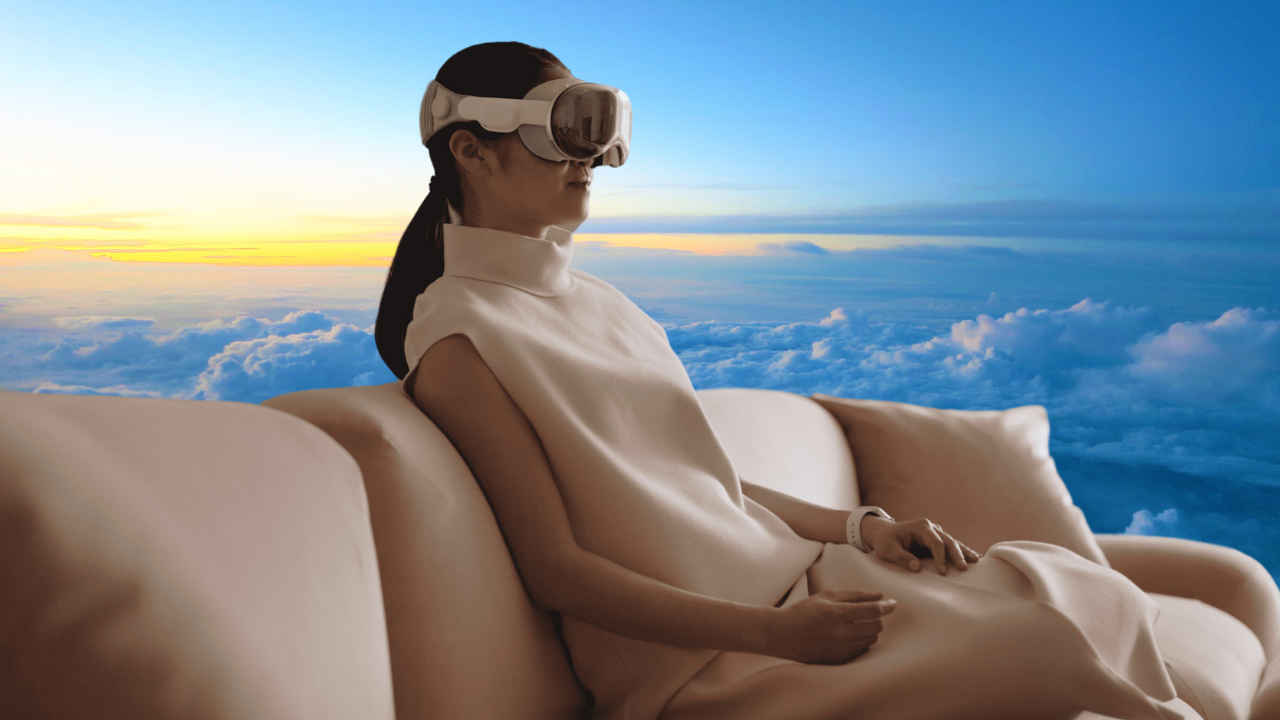Our extended reality truly begins in 2024 with the Apple Vision Pro

Apple Vision Pro marks a pivotal moment in 2024, heralding a new era in extended reality (XR) with its advanced, user-friendly technology.
Qualcomm's Snapdragon XR2+ Gen 2 chip introduces enhanced interaction and visual fidelity in XR, setting a new standard for immersive experiences.
Microsoft's Mesh platform aims to revolutionize AR and VR in the workplace, offering holographic meetings and seamless digital integration in 2024.
Leave AR and VR behind in 2023, start saying ‘extended reality’ or XR for all things holographic, semi-immersive or fully immersive visual experiences from 2024 and beyond. Why do I say this, when things like the Meta Quest headset, Snapchat’s Spectacles and Microsoft HoloLens (among others) have existed for a few years now? Allow me to explain.
Just for comparison, think about the smartphone or foldable phones wave. One can say that smarter feature phones did exist up until 2007, just as the industry was preparing for an impending Android phone launch, but it wasn’t until Apple released the original iPhone did the current smartphone race truly kickoff. Similarly, the first commercially available foldable screen smartphone debuted in 2018, but it took until 2023 for every major smartphone maker (except Apple) to have a foldable variant out – all of them officially selling in India. Today, everyone acknowledges the iPhone as the foundation of the current smartphone industry, and 2023 will forever be remembered as a special year in the history of foldable phones. For the XR industry, 2024 will be like 2023 as it unfolded for the foldables, for no small part played by the Apple Vision Pro.
Also read: Apple Vision Pro pre-orders start on Jan 19: Check out these 3 mind-blowing features
Apple’s absence from the foldable phones market is revealing on multiple levels. The Cupertino giant perhaps considers foldables as a flash in the pan compared to the limitless possibilities of XR-based experiences, which makes the Vision Pro a potentially talismanic product to galvanise and boost the currently fledgling XR tech market.
There can be no arguments against the fact that Apple’s brand recognition and user base are immense. Yes, it’s atrociously expensive, but which first-gen device isn’t these days? Don’t forget, Apple has a history of defying the norm with respect to price and selling experiences (not just devices) to eager consumers like no other. If the Vision Pro proves successful and user-friendly, as Apple demonstrated during WWDC 2023, it could drive mass adoption of XR technology like nothing else, opening the door for other companies and developers to rush in and expand the scope of the market exponentially. Unlike traditional VR headsets, Vision Pro appears to prioritise spatial computing with enhanced phygital experiences. This could potentially spur development of spatial computing, with more sophisticated AR/MR (mixed reality) applications that leverage real-world environments and user location in less gimmicky ways.

On the technical front, Apple’s focus on high-end, integrated hardware and software is likely to inspire a lot of industry firsts as far as XR experiences go. The Vision Pro’s advanced display and eye-tracking capabilities will no doubt spur other manufacturers to innovate and improve their offerings. From an ecosystem, Apple’s roadmap of releasing tools and APIs for VR/AR development could benefit the entire industry by creating a more standardised and accessible platform.
If Vision Pro is destined to be the iPhone moment of the XR industry, let’s just say the competition like Google, Samsung, Microsoft and others seem to have plans in place to ensure Apple’s success doesn’t happen at their cost.
Also read: Apple’s Vision Pro headset uses your eyes in three amazingly new ways
Chipmakers like Qualcomm have already announced their next-gen spatial computing Snapdragon XR2+ Gen 2, which aims to make blurry and clunky XR interactions a thing of the past. With claimed features including 4.3K per eye resolution, enhanced tracking and environment mapping to unlock more natural and intuitive interactions within XR experiences, optimised performance and battery life while maintaining visual quality allowing for smoother immersive gameplay and longer usage times, a new class of XR devices are coming that will offer seamless overlays of digital information on your surroundings, powered by low-latency video-see-through. See virtual objects interact with your physical surroundings, and feel your real-world gestures mirrored in the digital realm. The possibilities as you can imagine are endless.

Apart from Qualcomm’s push, Microsoft’s Mesh platform aims to aggressively combine AR and VR experiences with productivity tools, and potentially transform how we work and collaborate in 2024 and beyond. Imagine holding holographic meetings in virtual boardrooms or seamlessly accessing digital information overlaid on real-world environments. In 2024, expect major advancements in Mesh’s capabilities, making it a go-to tool for businesses and remote teams.
Also read: Despite Apple Vision Pro reveal, mixed reality won’t yet become mainstream
Beyond Google’s ARCore and Apple’s ARKit wars, from an industry standpoint, the ongoing standardisation efforts of the OpenXR Consortium could finally bear fruit in 2024 as well. A unified API and development platform would significantly reduce fragmentation, making it easier for developers to create content for multiple XR devices and platforms. This would attract more developer talent and investment, leading to a richer and more diverse XR ecosystem that bears fruit much faster than anticipated.
I truly think whatever we saw till 2023 was nothing but proof-of-concepts and niche use cases trying to showcase a few companies’ take on what our digital world might look like in AR, MR and VR. But this year, we will really find out how XR experiences will unlock the future of our digital possibilities.
This column was originally published in the January 2024 issue of Digit magazine. Subscribe now.
Jayesh Shinde
Executive Editor at Digit. Technology journalist since Jan 2008, with stints at Indiatimes.com and PCWorld.in. Enthusiastic dad, reluctant traveler, weekend gamer, LOTR nerd, pseudo bon vivant. View Full Profile




